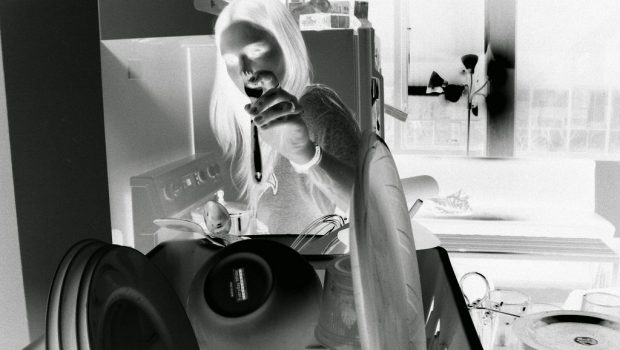Latino Leaders Speak
Soledad O’Brien
When you come into the world with the name María de la Soledad Teresa Marquetti O’Brien, you’re going to be dealing with identity issues your whole life. I am a first generation American. My dad is Australian, and he’s white. My mother is Cuban, and she’s black. Of course, who you are and where you’re from matters a lot when you’re one of six children raised in an American suburb, where no one can seem to manage to pronounce your name and you don’t look like anybody else. But because of my parents, I know who I am and what I am. I’m a mixed-race Latina and first-generation American, acutely aware of how nuanced the conversations about identity have to be.
My parents met in 1958 in Baltimore, Maryland. My mother would tell us the story of how she used to walk to daily mass. She was studying at Johns Hopkins University, and my dad was working on his PhD. She would walk to daily mass and my dad would drive because he had a car. As he drove by, because they sort of recognized each other, he would wind down his window and say, “Would you like a ride?” My mother would say, “No, thank you,” because you don’t take a ride from a man you don’t know well. I was like, “Gosh, even on the way to daily mass?” I mean, if there’s a safe guy, it’s the guy going to daily mass. But I digress.
So, day after day, my father would drive by, “Do you want a ride?” “No, thank you. No, thank you.” Until one day, she said yes, and they decided to go on a date that night. Every single place they went, because it was Baltimore in 1958, and my dad is white and my mother’s black, they wouldn’t seat them together. Every place said to my father, “You can come in but she can’t come in, and you certainly can’t come together.” My mother told us the story about how she took my father back to her apartment after they were turned down at restaurant after restaurant—she’s an amazing cook of incredible Cuban food—and she made him dinner. The entire point of her story was, “See. If you can cook, girls, you can get a man.” I kid you not, truly. We took from the story much more than that. I’d like to say I don’t make it, but I make it happen. That’s the kind of cook I am.
My parents decided at the end of 1958 to get married in Baltimore, Maryland. In the state of Maryland, interracial marriage was illegal; and so they got in their cars, drove to Washington, D.C. and they got hitched. Then, they drove back to Maryland and lived as a married couple. Their friends would tell them, “Whatever you do, do not have children because interracial children will never fit, in this world.” I’m number five of six. My mother was a terrible listener every step of the way, which she used to tell us. They also used to say, “When obstacles are put in your path, move around them, walk around them, climb over them and get around them.” My mother would tell us, “People do not define you. It’s not up to people to define you. God defines you.” Then she’d go into a long reason why I’m not going to church enough, “but people do not define you.” Because of that, it matters so much that we are here because we get to be the role models for those who maybe didn’t have a mother and father like mine. It pushed us every step of the way to be what we wanted to define.
When I was growing up, there was Gloria Rojas. Gloria Rojas was a reporter on, I think, the NBC channel. We’re a real NBC family. We’d watch Gloria Rojas. She would do the most Anglo delivery of the news: “At City Hall today, blah, blah, blah, blah, blah, . . . then later today, we’re expecting to hear from the gover- nor, blah, blah, blah,” until she got to her closing. Then she’d say, “Reporting live, this is Gloria Rojas.” I remember thinking, “Wow. If Gloria Rojas can be on TV, María de la Soledad Teresa Marquetti O’Brien could be on TV too.” I was being interviewed in Wisconsin, a young woman who is half-white, half-Japanese said to me right before the commercial break before we did our interview, “You know, at my station”—she must have been twen- ty—“they call me a young Soledad O’Brien.” I said, “Girl, I’m the young Soledad O’Brien.” Remind me never to hire her at CNN. But I think when I’m feeling charitable, I think what she was saying was people like us don’t necessarily fit into that box. Our time has arrived. They don’t get to define us. We get to define us.
My sister, Estela, was a couple of years ahead of me at Harvard College. She was a physics major. She would tell me all the time how her professors and the administrators would tell her, “Minorities do not succeed in physics, and women do not succeed. You should drop this major. You will not make it.” I was writing an article once for Time Magazine about it, so I called her and said, “So you’ve got a lot of subtle pressures.” She said, “No, no. It wasn’t subtle. People would call me and tell me minorities don’t succeed and women don’t succeed. You should drop your major.” She went on to get her degree in physics from Harvard, then got her master’s in astrophysics, and then went on to get her M.D. and her PhD. She’s an eye surgeon now in Harlem. I guess minorities do succeed sometimes in physics. But she was told every step of the way, “You cannot do it. You will not do it.” I asked her, “Why did you think you did it, if everyone around you was saying you couldn’t?” She said, “Because mom made it clear that others don’t get to define us.”
My mother had come to this country for an opportunity, and there wasn’t a human being who was going to stop her. I remember when I started looking for reporting jobs in 1993. I had an interview in Springfield, Massachusetts. We did the whole tour of the station. Usually, they show the backroom where the equipment is. That means that you’re in, you’re going to get the job. They don’t show you the backroom if you’re not going to get the job. The news director sat down, he was like, “I’ve got to tell you, we only have a spot for one black reporter, and you’re not dark- skinned enough. You won’t look black on TV.” I remember thinking literally, “Wow, should I be more offended?” Forget the Latinos. There was no Latino job at all. But the black job: there was only one or I wasn’t going to get the one job that existed?
At Hartford, a couple of days later, I had an interview with the news director. It went very well until he said to me, “Soledad, that’s such a hard name to pronounce.” I said, “Really? I grew up in an all-white neighborhood in Long Island and no one had trouble there.” He said, “Yeah. Would you think about changing your name?” I said, “Well, loosely translated, I’m named after the Virgin Mary. Since I don’t want to get struck dead by lightning on the way home today because I changed my name, no.” But each time, I would call my mother and tell her, “I don’t know where I fit in. I can’t fit into this box that has been created for what people are supposed to be like.” She would say, “Bide your time. People do not get to define you. You define yourself. There will be a place that wants you, and you’ll get to do the work you want to do.”
She was right. I spent my career in local news, and then went to the network. Lately I’ve been working on documentaries. I’ve had a chance now to do stories on people who are undercovered and people who are covered most often one-dimensionally, demonized at times, painted with a very broad brush, or whatever you want to call it. It’s really been a joy. It’s truly been a privilege to tell stories about people from whom we have so much to learn, who have amazing stories, who have a million stories, for whom four hours is going to be a drop in the bucket for 50 mil- lion people who have really interesting stories. And you know what? They’re not the ten stories everybody does. They’re the other 49 million stories that no one does. What a great opportunity. I need ten hours at least.
I have four small children. It’s in part because of them that I am so happy that I get to devote my time doing stories about the community, our community. It’s allowed me an opportunity as well to explore identity—our identity as community, my identity personally—and how much that identity matters in a nuanced and meaningful way. Our documentary, Latino in America, and the book that goes along with it, is my chance to tell the story of how people of different races and different backgrounds from 21 different countries can all be grouped into this thing called Latino. How does that work? What do we have in common? What does it mean to be Latino today? I got to discover a lot about my mom and myself in the process. My mother who told me, “I will never be interviewed for your book,” finally sat. Yeah, toughest, most hostile interview ever: she finally sat down and talked to me about her trip from Cuba to the United States.
Latino, of course, is not simply this grouping of people who speak Spanish. It’s not the same as being Hispanic with just hints at origins. It’s not about being Latin from Latin America. It’s an experience. It’s what happens once we get here. And, as you said, we’ve arrived. We have arrived. The Garcías are one of the pieces we’ll do in our documentary on the first night. The name García is number eight, out of the top ten most popular American names in the United States. That kind of says it all right there.
In 2007, the number of new U.S.-born Latinos outpaced those immigrating to the United States. This boom of Latinos is an American phenomenon. Twenty-five percent of kids in this country are Latinos. And we’re living everywhere, not just on Calle Ocho in Miami or in East L.A., but in Shenandoah, Pennsylvania, St. Louis, Missouri, and Orlando, Florida. To say that Latinos are the future of this country—you’ll hear that a lot—is not enough. We are the present of this country. We’re here.
In Orlando, Florida, I interviewed a guy named Carlos Robles who is American-born. He is American bred. He was taking accent reduction classes because he’s struggling to get a job. He can’t get a job because no one can understand his English. He was raised in Puerto Rico and trying to make a go of it in Florida. It’s with his story that we explored the complexity of our country’s relationship with Latinos. He is a U.S. citizen trying to get rid of the accent that he acquired on U.S. soil. At the same time, our country has room for a wonderful woman, Marlene Ferro, a Latina living in a Miami suburb. Living in Miami means she’s going to throw her daughter a quinceañera that is expensive. She is going to find 30 kids to put in her backyard, all of them second or third generation Americans who can speak fluent Spanish and who have been dancing salsa all their lives. If you ask these young people, “Are you Cuban or are you American?” they look at you confused. They say, “I’m both. What do you mean by that question? I’m both.”
In Miami, that’s okay. It’s less clear if that’s okay in places like North Carolina, where I interviewed Bill and Betty García. They are trying really hard to teach their kids that there’s meaning in the fact that their dad’s a Nuyorican and their mother a Dominican. What does that mean? Well, the children push back. Like any fifteen year old, they don’t want to be dragged to the art show.
They don’t want to study their history. Because they’re brown- skinned kids in North Carolina, they think they’re black. Their parents say, “Let’s talk about your identity. Who are you?” It’s a struggle that lots of families have that search for identity. They don’t speak Spanish. They can’t communicate with their cousins when they come back to New York. Who are they? Where do they fit? The parents struggle and the kids struggle too.
I interviewed one of the sons and said to him, “You mother is offended that you don’t embrace her culture. She tries to cook for you. She tries to dance with you. You push her back.” He said, “You misunderstand. I’m embarrassed that I can’t. It’s not me being embarrassed of her. I’m embarrassed of me.” That changed everything. Then, of course, there’s a story we know, the story of Luis Ramírez who was living in Shenandoah, Pennsylvania when he was reduced to that stereotypically illegal immigrant crossing the border. He was beaten to death by a group of teenagers who were convicted in the end of simple assault, not murder, not homicide. They were convicted of simple assault. His story is clearly the story of how vulnerable so many people are.
You saw Eva Longoria. She’s a ninth-generation American. Her people were here before the Mayflower. They beat them out. And yet, at the same moment she’s existing, Luis Ramírez is existing too. She, of course, is the star of Desperate Housewives. When I asked her what it meant to be a Latina, she literally was perplexed in that same way. She said, “I’m an American. I’m an American with a Mexican heart.” She celebrates her heritage and does not allow herself to be reduced to a stereotype about her heritage. That’s really, I think, what we all want, anybody wants. It’s a very complex and challenging thing, this Latino identity. It’s as much about how we see ourselves as how others see us. It’s as much about opportunities we embrace as opportunities we push away. Complexity, of course, is most apparent in places where there are high concentrations of Latinos.
I’ve been to Miami so many times. I gained ten pounds in Miami this year. The food at the airports in Miami. I mean, that’s ridiculous. You cannot help but marvel at the Miami that Latinos have built. It’s amazing. It is amazing when you think of this sleepy Jim Crow town that it was compared to, to what it has become today. It boggles the mind. Bilingualism and entrepreneurship have made Miami this hub for “bajillions” of dollars of commerce with Latin America.
We interviewed Senator Mel Martínez in our documentary. He came to Miami, as you all know, as a child refugee from Cuba. He arrived at Boys Town, was given a visa and a place to live. He got an excellent education, support and love every step of the way. He will be the first to tell you, it allowed him to rise to one of the most powerful jobs that you can have today in this nation. At the same time I was interviewing him, I was interviewing a young woman, who I’ll call Martha since we can’t tell you her name, who’d also come to Miami. She’d been captured by the Border Patrol, and she was living at a detention center (which is what Boys Town is now for: unaccompanied minors who come across the border); it’s still Boys Town, but a few years later. She was wait- ing adjudication on immigration charges and had been recently released into foster care. What happened to her and what would happen to her if she didn’t get support and a visa? Would she become a Senator Martínez down the road? We don’t know.
My travels have also taken me to Los Angeles several times—also excellent food. As you know, L.A. experienced the highest numerical growth of Latinos last year. L.A., of course, is a place where I think, as Latinos, you feel like you’ve arrived. Everybody is speaking Spanish. Latinos are absolutely in every position of power. And there’s not as much question, I think, about what are you doing here. Certainly, when you compare it to a place like Charlotte, North Carolina, we dominate the political scene and the cultural scene. And it’s there that I met a young woman named Cindy García. She attends Fremont High School in East L.A. The L.A. school systems did not build schools for 39 years while, at the same time, the population was exploding. Of the 680,000 students in L.A. schools, 200,000 attend class in portable classrooms. After a certain number of decades, honestly, they should not be called portable classrooms anymore. They’re just the classrooms.
It is a mirror of what Latinos face across the country. Latinos are the nation’s most needy students. They are the poorest, the most likely to attend the most overcrowded classrooms. A study done by the National Council of La Raza determined that Latinos are missing from Head Start programs and preschools. This young woman who we follow, Cindy García, desperately wants to graduate. She fully understands that she will be missing out on the American economy if she does not graduate and move on to the next thing. Half of all the nation’s school children by 2050 are going to be Latinos. Cindy García is a metaphor for a whole bunch of Latinos.
If Cindy and all these other students fail to be educated, there are tragic consequences not just for them but for the rest of us as a nation. We lose, not just them—everyone loses. The problems that Cindy faces are very much Latino problems and at the same time are problems made in the good old USA. They speak volumes about why identity matters. She is devoted to her family. She misses school to help her mother care for her siblings. She misses school to translate for her mother the demands of social workers, officials, anybody that her mother needs to deal with. Cindy needs school, but she doesn’t go.
She has literally not enough hours in a day to study, and her school is called the dropout factory. Seventy-one percent of the students in Cindy García’s school dropout. I mean, think of that staggering number. Seventy-one percent of these students drop out. Being Latina for Cindy García is a blessing and a curse. She works so hard that it is breathtaking to watch her work. And in any other circumstance, this girl would be a star. But she needs support. She wants to succeed so badly, and there are so many obstacles in her way.
Her story is probably the one that stays with me the most. I tell it to you today because there really is no certainty that Cindy graduates. Every week that goes by, we think, will Cindy make it? Oh, she’s going to make it. No, she’s not. Oh, she’s going to make it. Oh, she’s not going to make it. There is no certainty. And if she does not graduate, we have to understand that it’s our loss as a community. We define who we are. We get to change a community and change it for the better, enrich society, embrace education and build compassionate consciousness of our community.
I want Cindy García to have what I had, which was what my parents gave to me when they came, exactly what they came to this country for, a place to get good opportunity, education, support, self-esteem, a fundamental belief that whatever it is that you want to do, you can do it. When my mother would say that to me, I didn’t roll my eyes. I truly believed her. I was like, “Okay, I can do it.” We have to recognize that Cindy’s story belongs to all of us and that we have to pledge to make the Cindy Garcías of this nation a success. As our demographics change, there are a lot of potential Cindy Garcías. Cindy García’s problems have to be our problems, and we have to embrace them. We have to make our successes their successes too.
That is what being Latino in America is. It’s succeeding, fulfilling the dream and the promise that we came here for, and then turning around and grabbing everybody else and making it happen for them too.
*This is an excerpt of the book Latino Leaders Speak published by Arte Público Press
 María de la Soledad Teresa O’Brien(born September 19, 1966) is an American broadcast journalist and executive producer. Currently, O’Brien is the anchor for Matter of Fact with Soledad O’Brien, a nationally syndicated weekly political show owned by Hearst Television. O’Brien has appeared as a television anchor and correspondent on MSNBC, CNN, Al Jazeera America, and HBO.
María de la Soledad Teresa O’Brien(born September 19, 1966) is an American broadcast journalist and executive producer. Currently, O’Brien is the anchor for Matter of Fact with Soledad O’Brien, a nationally syndicated weekly political show owned by Hearst Television. O’Brien has appeared as a television anchor and correspondent on MSNBC, CNN, Al Jazeera America, and HBO.
Posted: September 6, 2017 at 7:56 pm










